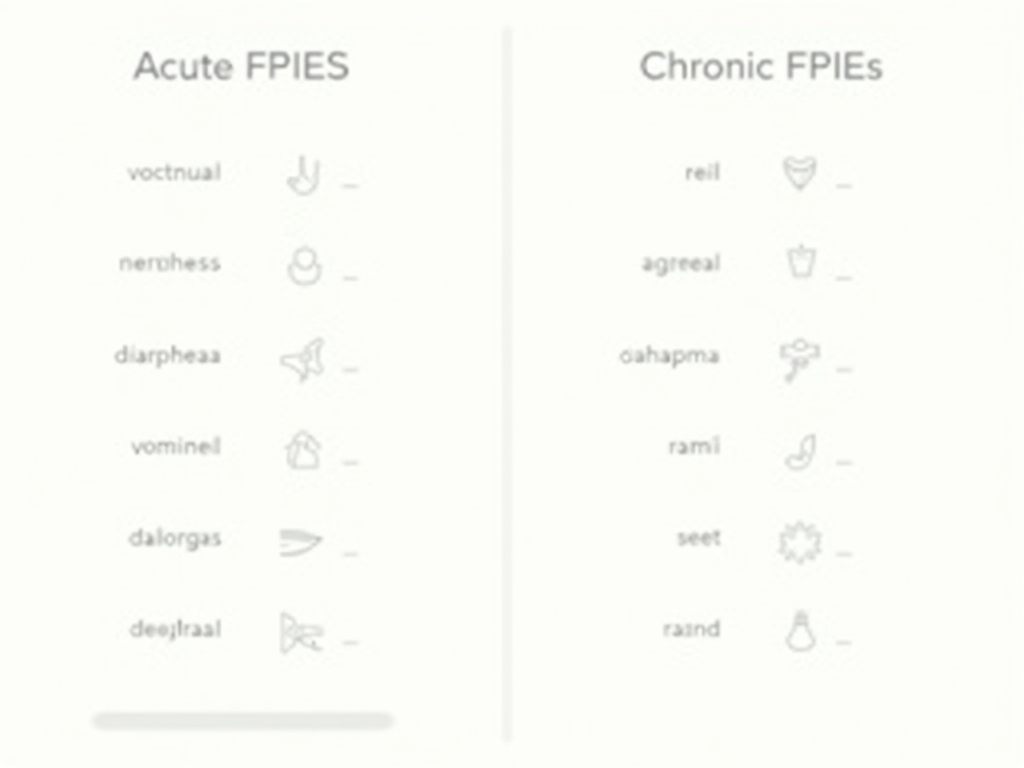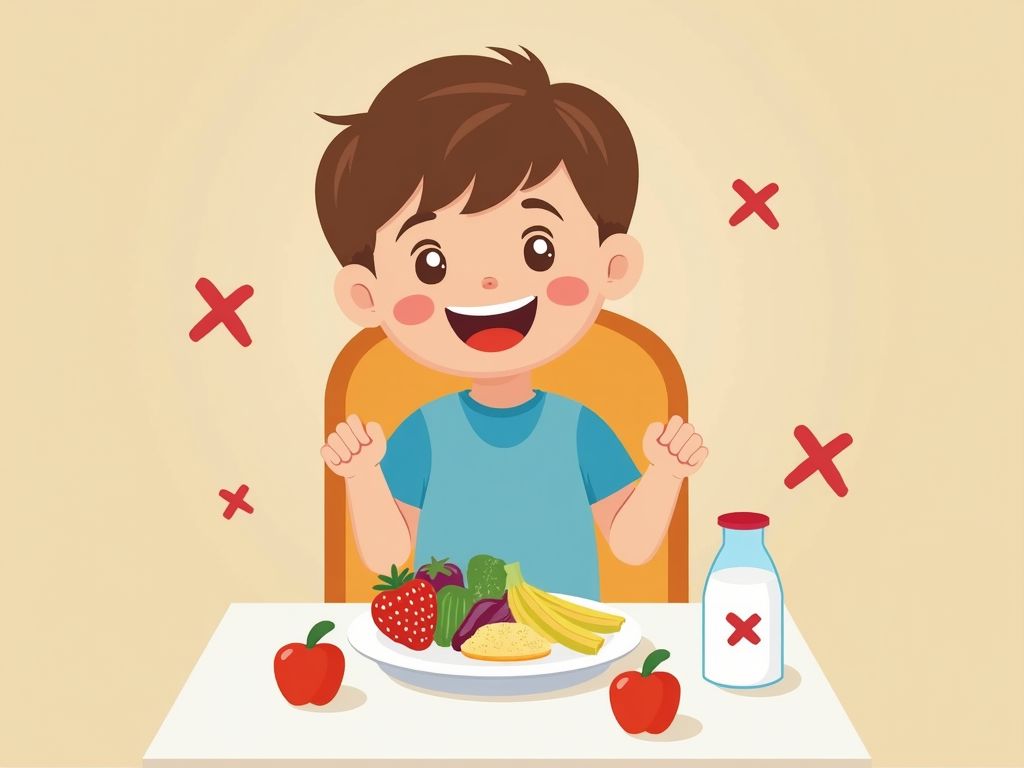Overview
Food Protein-Induced Enterocolitis Syndrome (FPIES) is a rare but serious food allergy that affects the stomach and intestines, mostly in babies and young kids. It can show up in two ways: acute FPIES, with sudden and severe symptoms, or chronic FPIES, with ongoing, milder issues. Knowing the difference helps parents and doctors manage it better.
What is FPIES?
FPIES happens when the body reacts to proteins in certain foods, causing swelling in the gut. Unlike typical allergies with rashes or breathing problems, FPIES hits the digestive system hard. Symptoms show up hours after eating, not right away, which makes it tricky to spot. It’s most common in infants, but older kids can have it too.

Acute FPIES: The Sudden Storm
Acute FPIES strikes fast and hard. Imagine your child eats something like rice or milk, and 1-4 hours later, they’re vomiting over and over. It’s scary. They might also get diarrhea, look pale, or act super tired. If it gets bad, they could dehydrate and need a doctor quick.
Here’s what you need to know about acute FPIES:
- Symptoms: Lots of vomiting, diarrhea, tiredness, pale skin, dehydration.
- Triggers: Foods like cow’s milk, soy, rice, oats, or even poultry.
- Diagnosis: Doctors look at symptoms and food history. Sometimes they test with small amounts of the food in a safe place.
- Management: Avoid the problem food completely. Have a plan—like keeping rehydration drinks handy and knowing when to call for help.

Chronic FPIES: The Slow Burn
Chronic FPIES sneaks up on you. If a child keeps eating the trigger food—like milk every day—they might start vomiting now and then, have runny stools, or stop growing as they should. It’s not as loud as acute FPIES, but it’s still a big deal because it doesn’t go away on its own.
Key points about chronic FPIES:
- Symptoms: Off-and-on vomiting, loose stools, slow growth, crankiness, sometimes blood in poop.
- Triggers: Same culprits as acute FPIES—milk, soy, grains.
- Diagnosis: Tougher to pin down. Doctors might suggest cutting out foods to see if things get better.
- Management: Stop the trigger foods. Make sure the kid gets enough nutrients to grow strong—sometimes with help from a dietitian.

Acute FPIES vs Chronic FPIES: What’s the Difference?
Both types come from the same problem—the body fighting food proteins—but they look different. Acute FPIES is like a hurricane: fast, fierce, and obvious. Chronic FPIES is more like a leaky faucet: steady, quiet, but damaging over time. Acute hits after one meal; chronic builds up with regular eating. Both need you to ditch the trigger foods, but chronic might also mean extra checkups to track growth.
Here’s a quick breakdown:
| Feature | Acute FPIES | Chronic FPIES |
|---------------------|------------------------|------------------------|
| Timing | Hours after eating | Days or weeks |
| Symptoms | Severe, sudden | Milder, ongoing |
| Emergency Risk | High | Lower |
| Diagnosis | Symptom-based | Elimination diet |

My Story: Living with FPIES
When my son had his first acute FPIES reaction, I panicked. He ate oatmeal, and two hours later, he couldn’t stop throwing up. He went limp in my arms, and I rushed him to the ER. The doctors said it was FPIES, not a bug. Later, we noticed he wasn’t gaining weight—chronic FPIES from milk. We cut out the triggers, and it was like night and day. But it took teamwork with a specialist and lots of label-reading. You’re not alone—talking to other parents helped me cope.
Tips from Experience
- Keep a food diary. Write down what they eat and how they act after. It’s gold for spotting triggers.
- Stock up on oral rehydration salts—like Pedialyte—for acute attacks.
- Don’t guess—work with a doctor who knows FPIES. The American Academy of Allergy, Asthma & Immunology has great info.
- Be patient. Finding safe foods takes time, but it’s worth it.

Why It Matters
FPIES isn’t just a picky eater phase—it’s a real condition that can mess with a kid’s health. Acute FPIES can land them in the hospital; chronic FPIES can slow their growth. But with the right steps, kids can thrive. The National Institute of Allergy and Infectious Diseases says early action is key. Don’t wait to get help if something feels off.
Summary
FPIES is a food allergy that comes in two flavors: acute and chronic. Acute FPIES brings intense vomiting and tiredness after eating a trigger food, while chronic FPIES causes quieter, long-term issues like poor growth. Both mean avoiding trigger foods like milk or rice and watching closely. See a specialist if you suspect FPIES—it makes all the difference.
Discuss Here